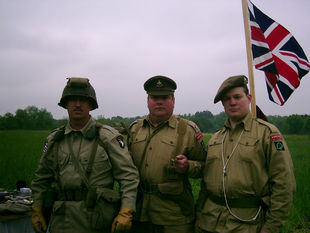



17 June is the anniversary of the sinking of the SS Lancastria in 1940, the worst maritime disaster in British history. The story of two survivors shows how great a role fate plays in war.

Harry Higton and Arthur Castellette were both serving in the 1/5th Sherwood Foresters, but had only just met when they boarded the Lancastria. They both probably considered themselves lucky to have got transport back to England as the German army overran France. They also probably considered it less than fortunate that on the overcrowded liner they couldn’t go below to get any food, but this saved their lives. They were up on deck when the Luftwaffe attacked. The sinking itself was in some respects a fluke – the fatal bomb went down the ship’s funnel, exploding in the boilers and tearing it apart. Anywhere else and the loss of life would have been considerable but maybe not as catastrophic. As it was, between 4,000 and 6,500 lives were lost.
Harry and Arthur were not among them. They had managed to jump from the sinking ship, avoid being dragged under, and evade machine-gun fire from the strafing aircraft. They were picked up by a French fishing boat, and then later transferred to a British trawler which took them home. Both rejoined their regiment.
In England Harry’s luck seemed to take a turn for the worse. During rifle training a bullet ricocheted off a target support and wounded him in the arm. When Arthur and the rest of the battalion sailed for the Middle East in October 1941, Harry was left behind. What had seemed like bad luck was in fact a stroke of good fortune for Harry. The 1/5th were re-directed to the Far East where they landed in Singapore on 29 January 1942. Less than three weeks later Arthur and the others were prisoners of the Japanese.

Higton was posted to the 2/5th Battalion. Two weeks after Singapore fell, they experienced a disaster of their own, at Sedjenane in Tunisia, where almost half the battalion were surrounded and captured by a German counterattack. Harry, by now a sergeant, was among those captured and taken to an Italian POW camp. When Italy surrendered many men escaped but not Harry. The Nazis took over the camp and he ended up in Germany until liberated at the end of April 1945. It was a harrowing experience, but at least a relatively safe one, compared to the substantial risk of death or injury as a front-line infantryman. Harry married, and lived in Nottingham until he died in 2011.
Being a prisoner of the Japanese was far worse. About half of the captured Foresters died of disease, malnutrition or brutality in the hands of the Japanese. But Arthur was not one of them. He survived the camps, and on 4 September 1944 he left Singapore on board the transport Rakuyo Maru bound for Japan.

On 12 September she was torpedoed by a US Navy submarine. Arthur was among the 1,159 POWs who died. For him, there had been no escaping fate.





